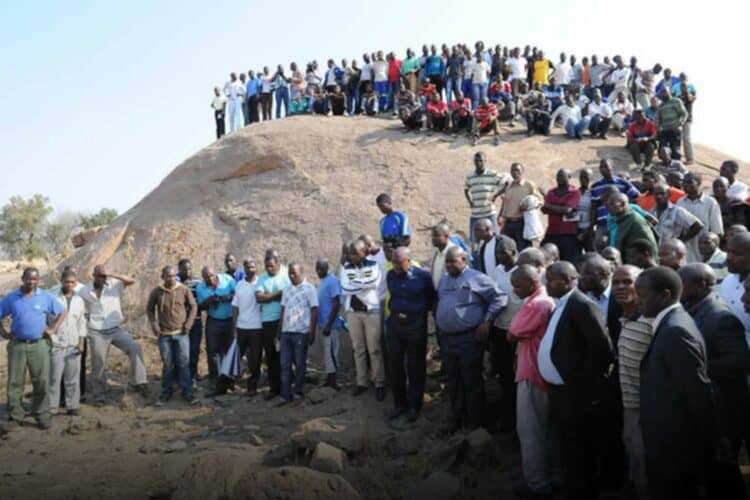On the 11th anniversary of the tragic Marikana massacre, the memory of the horrifying event still casts a long shadow over South Africa’s history.
Marikana massacre remembered: Here’s a look back at what happened on 16 August 2012
On 16 August 2012, a fateful clash between striking mineworkers and the South African Police Service (SAPS) resulted in the loss of 34 lives and left 78 individuals seriously injured.
The incident shook the nation and brought issues of labour rights, inequality, and the use of force by authorities to the forefront.
A Cry for Better Conditions
The Marikana tragedy unfolded against the backdrop of a wildcat strike, where mineworkers took to protesting against their working conditions without the official endorsement of their unions.
The labourers, mainly employed by the Lonmin platinum mine, were demanding better wages and improved living conditions. The strike had been ongoing for several days, amplifying the miners’ grievances.
The situation took a tragic turn on 10 August 2012, when a group of striking miners approached their union, the National Union of Mineworkers (NUM), seeking support.
Instead, they were met with live ammunition, resulting in the loss of two lives. This violent response exacerbated an already tense atmosphere and led to a breakdown in communication between the miners, their families, and the authorities.
In the days that followed, the unrest escalated. A series of violent clashes between miners, security personnel, and police officers left several dead on both sides.
The miners’ attempts to cross the field to meet with colleagues at another platinum mine, Karee, were thwarted by security forces. As tensions flared, police opened fire on the miners, leading to further casualties.
The Devastating Clash
On 16 August 2012, the confrontation reached a tragic climax. More than 400 police officers, heavily armed and clad in military gear, confronted the striking miners at Wonderkop Hill.
What unfolded was a harrowing scene of violence, as footage captured the police firing directly at miners, resulting in numerous fatalities. The tragedy shocked the world and raised questions about the proportionality of the police response.
The aftermath of the Marikana massacre saw the establishment of the Marikana Commission of Inquiry, tasked with investigating the events leading up to the tragedy.
The report submitted by former president Jacob Zuma in 2015 offered some insights into the circumstances, absolving certain key political figures of direct involvement but also pointing out failures in communication and engagement by both mine management and unions.
Impact and Ongoing Struggles
The repercussions of the Marikana massacre are still felt deeply in South Africa.
Families of the victims continue to seek justice and reparations for their losses. The event remains a sombre reminder of the complex issues surrounding labour rights, economic disparities, and the responsibilities of both authorities and corporations.
As South Africa reflects on the 11th anniversary of this haunting event, it serves as a poignant reminder of the need for continued efforts towards justice, reconciliation, and addressing the underlying systemic issues that contributed to this tragic chapter in the nation’s history.






